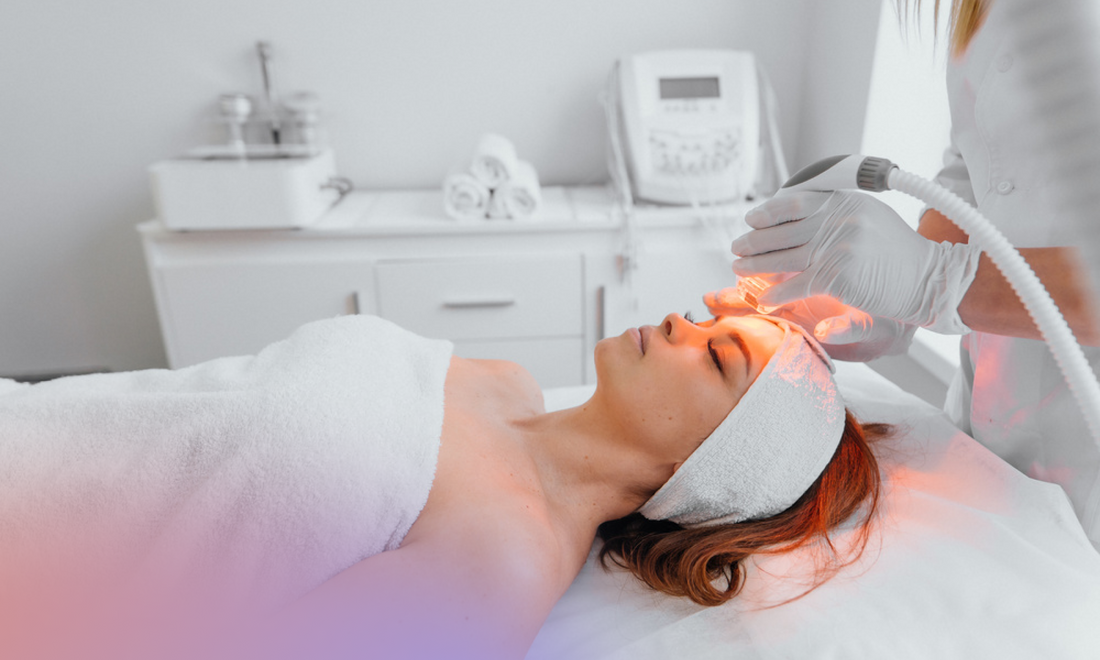Exploring LED Therapy: A Skin Care Revolution

If you've spent any time on social media, particularly on beauty-focused platforms, you've likely encountered someone using a glowing mask or wand on their face. These devices, part of the growing trend of at-home LED (light-emitting diode) therapy, are making waves in the skincare world—and for good reason. According to leading experts in photomedicine, LED-light therapy has been around for nearly two decades, and its popularity is only increasing.
What Is LED-Light Therapy?
LED-light therapy involves using specific wavelengths of light to trigger beneficial reactions in the skin. These reactions help increase cellular energy, reduce damage, promote healthier cell functioning, and stimulate collagen production. Additionally, this therapy can improve blood circulation and encourage the formation of new blood vessels, resulting in noticeable skin improvements.
For those seeking to maximize the effects of LED-light therapy, incorporating products like the Silicone Derma Wrap can be beneficial. This wrap, inspired by scar treatment technology, is designed to be used with your favorite products, enhancing the delivery of active ingredients to the skin.
LED-light therapy is available in various colors, each tailored to address different skin concerns. Red and blue lights are the most commonly used, and with good reason: they have been extensively studied and shown to be effective for a variety of skin issues.
What Is Blue-Light Therapy?
Blue-light therapy uses wavelengths between 380 and 500 nanometers to target bacteria and surface infections on the skin. It is particularly effective in treating acne by reducing the bacteria that cause breakouts. While blue-light therapy is primarily used for acne, it may also improve skin clarity, regulate oil production, and potentially address conditions like sun damage and rosacea. It has also been noted for its potential in treating eczema, reducing itching, and even stimulating hair growth.
However, it's important to note that while blue-light therapy has FDA approval for acne treatment, the evidence supporting its use for other conditions is less established. For this reason, blue-light-only devices are uncommon; instead, many options combine blue and red light or allow you to switch between colors.
What Is Red-Light Therapy?
Red-light therapy uses longer wavelengths, between 630 and 940 nanometers, allowing it to penetrate deeper into the skin. This deeper penetration boosts cellular energy, reduces inflammation, stimulates collagen production, and increases blood circulation. These effects make red-light therapy a popular choice for addressing signs of aging, as well as for treating conditions like rosacea, inflammatory acne, psoriasis, and eczema.
To further enhance the results of red-light therapy, consider applying a vitamin C serum beforehand. This potent antioxidant helps your skin's natural ability to repair itself, keeping it bright, vitalized, and line-free—perfect for complementing the rejuvenating effects of red light.
Combining Blue and Red Light Therapy
Combining blue and red light therapies can be particularly beneficial, as they address different aspects of skin health. Blue light targets bacteria and surface issues, while red light reduces inflammation and promotes healing. This combination can be especially effective for conditions that involve both infection and inflammation, such as cystic acne. Studies have shown that this dual approach can be more effective than traditional topical treatments.
Are There Any Risks?
While LED-light therapy is generally safe, there are potential risks, especially if devices are used improperly. Those with sensitivity to light or certain medical conditions should proceed with caution. Additionally, some medications and skincare products can increase sensitivity to light, making it essential to consult a healthcare provider before starting treatment.
Proper use is critical to avoid complications. Following the manufacturer's instructions carefully and ensuring your device is from a reputable source can help prevent issues such as burns or skin irritation. Although light therapy is generally low risk, there are potential side effects, including hyperpigmentation and blistering. People with darker skin tones may be more sensitive to visible light, so a reduced frequency of treatment is often recommended to minimize risks.
At-Home vs. In-Office Treatments
At-home LED-light therapy devices are designed to be less powerful than those used by professionals, primarily for safety reasons. While in-office treatments can deliver noticeable results in just a few sessions, at-home devices require more consistent use over time to achieve similar outcomes.

















